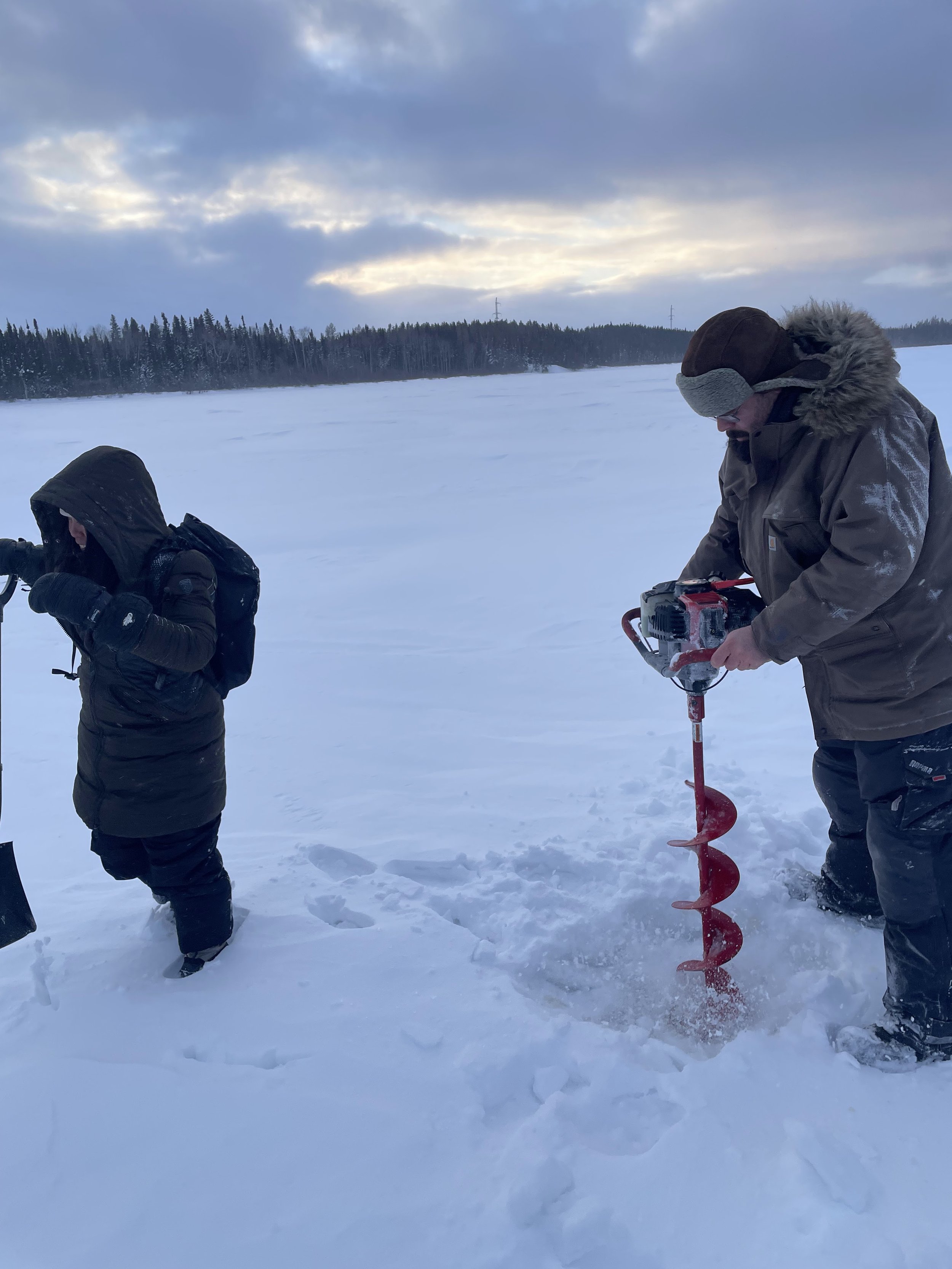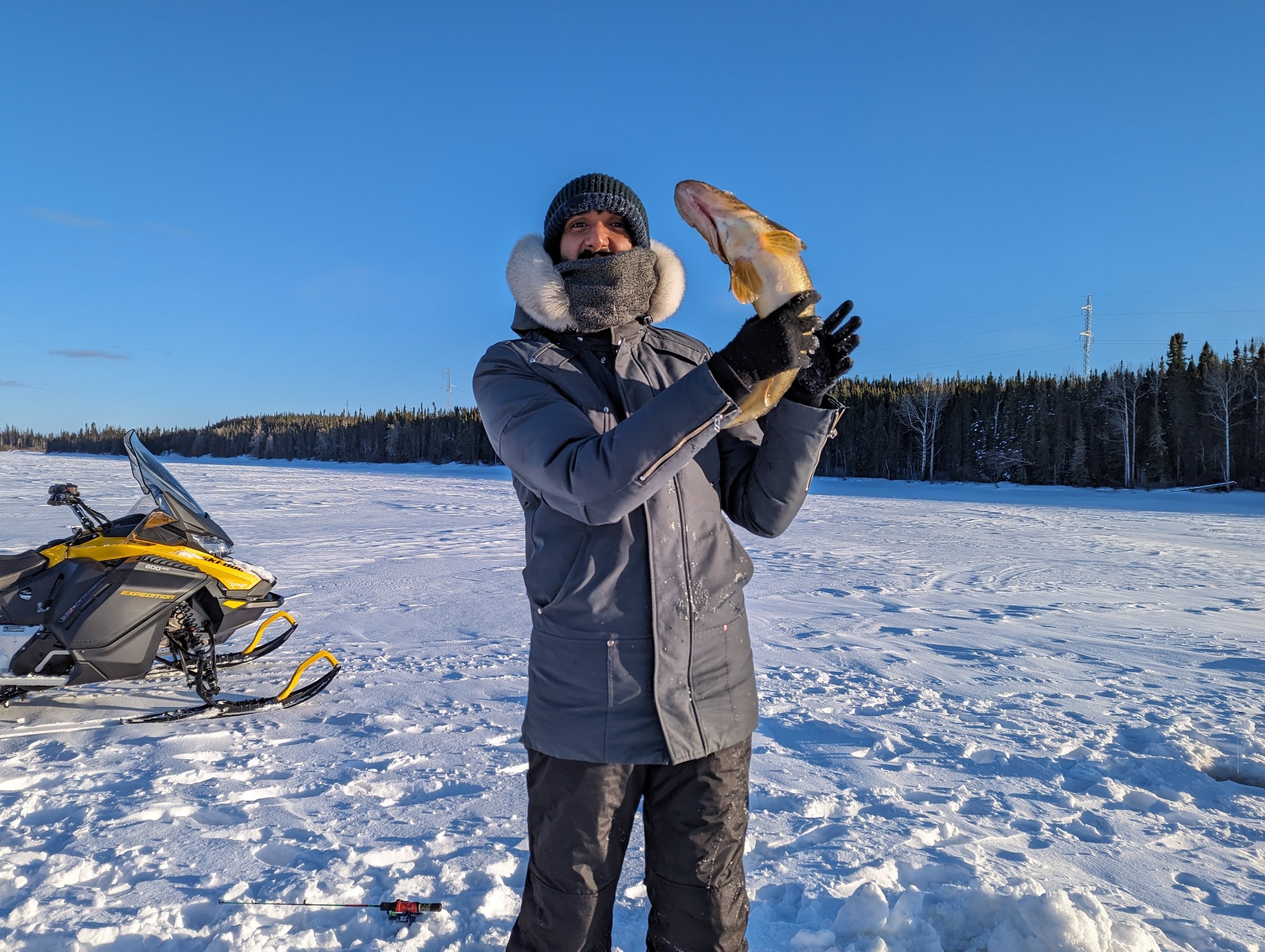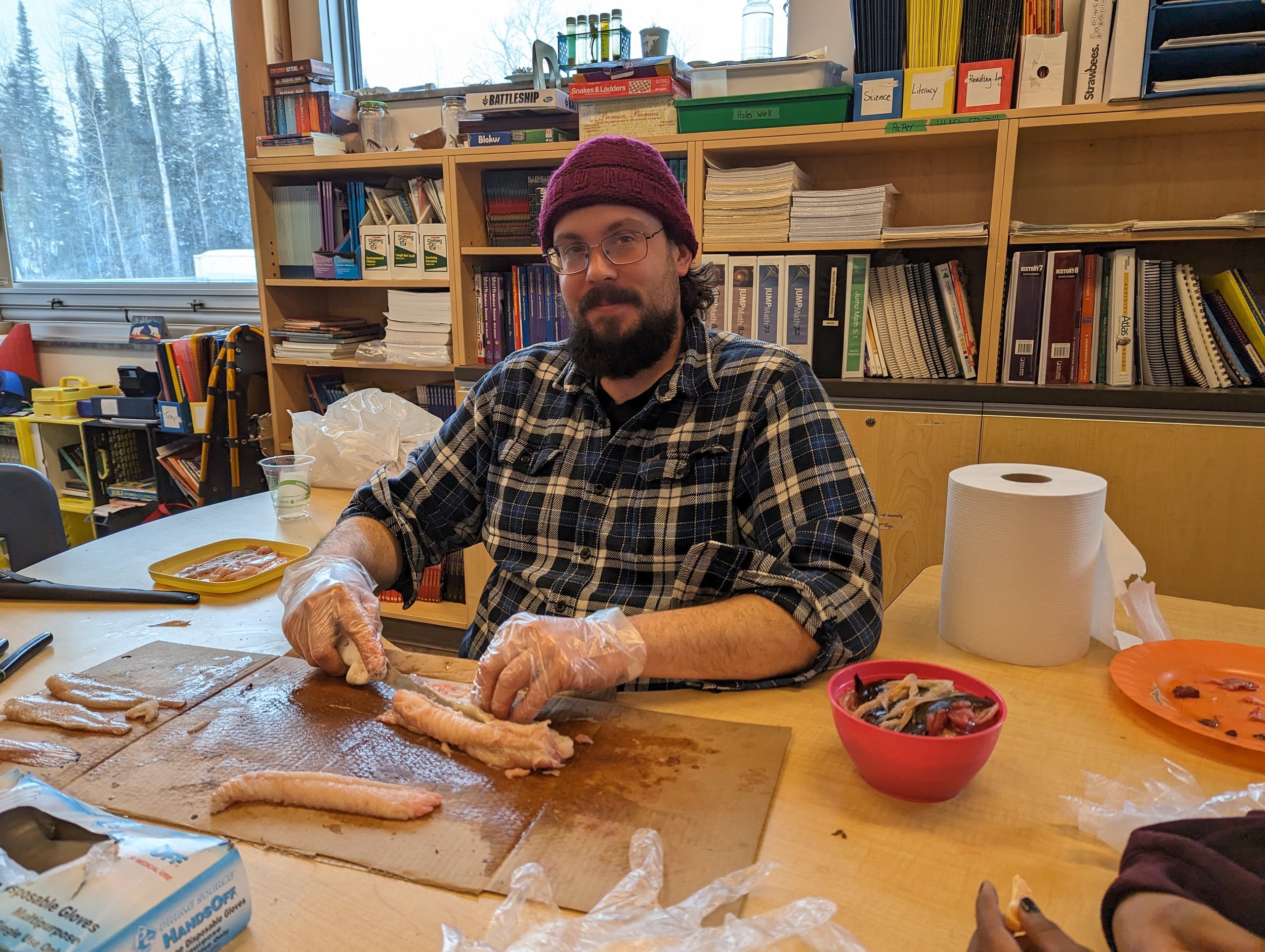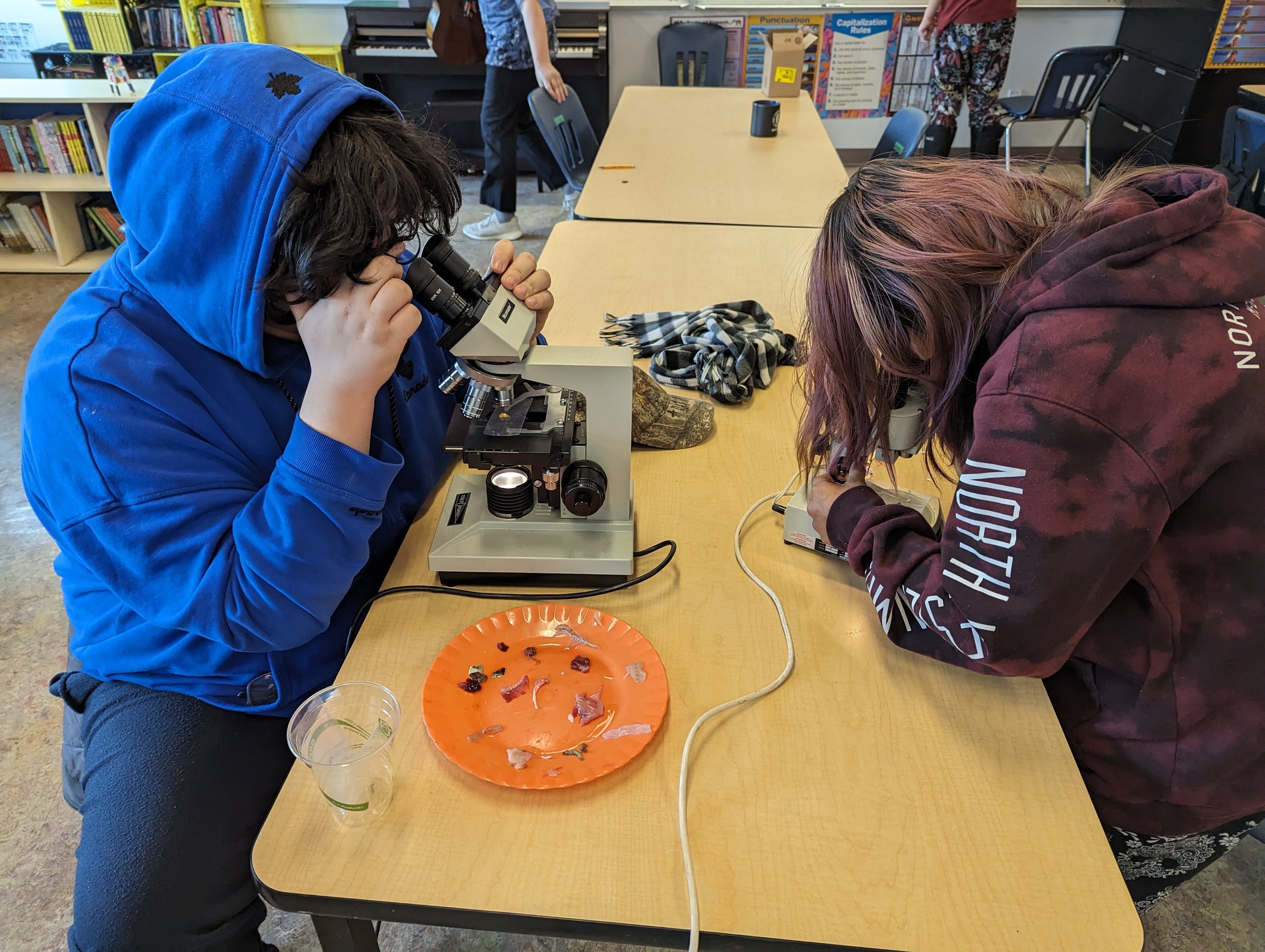Ice Fishing and Land-Based Learning
At Victoria Linklater Memorial School, nestled in the heart of North Spirit Lake, the love for ice fishing runs deep, especially for one passionate teacher, John. His enthusiasm for this winter sport is contagious, and it was evident when he took us on an unforgettable ice fishing expedition along the frozen river near the community.
Our adventure began on a crisp Tuesday evening, with John at the helm of the skiddo, and Hamzah riding along on the attached sled. As we made our way, we were playfully chased by huskies from the village into the frozen river. Along the way, we also encountered two grade 8 students who were setting-up a fishing net in a freshly drilled hole.
Despite the biting -25 degree weather, the clear sky filled us with anticipation for the evening's fishing prospects. John, with a hint of humor, dropped us off before a bend and about 100 meters from our fishing spot to ensure the safety of the ice path. He jokingly remarked that if we don't see him returning in two minutes, we should sprint to the village for help, adding he might have taken an unplanned swim in the freezing waters.
Upon reaching the designated spot, John instructed us to clear snow from five areas. He then drilled through the ice, after which we scooped out the floating ice from the holes. John imparted valuable insights into ice fishing techniques, teaching us the nuances of baiting, releasing the fishing line, and when to halt the release. He emphasized the importance of mimicking fish movements and rhythmically moving the line up and down to enhance our chances of success.
We drilled a total of five holes, each of us picking a specific spot for fishing, while the remaining two had rods with bells attached to signal fish bites. After 20 minutes, I experienced the excitement of reeling in a golden and sizable walleye with my first bite. Unfortunately, my joy was short-lived as the line broke, and the fish slipped back into the river. Despite subsequent bites, most were thwarted by the sharp-toothed pike, as John had warned. Undeterred, we continued our efforts into the sunset, a prime time for walleye fishing.
Although our efforts didn't yield a catch, we returned to the village where a thoughtful teacher had prepared a delicious meal of breaded shrimp, curry vegetables, and lentil soup. As we ate dinner, conversations meandered from personal stories to discussions about wildlife, plants, and trees in the Americas, fuelled by John's expertise as a biologist.
Determined not to be discouraged, we remained confident that our next ice fishing venture would be more fruitful. Unanimously, we agreed to return the following day immediately after school. At precisely 4:30 pm, we were geared up and eager to hit the ice again.
Surveying the snowy terrain, we located some of the previous day's holes by observing the distinct patterns in the snow. However, due to the harsh cold and swirling winds, we also had to create new holes as some of yesterday's spots had frozen over. Within 30 minutes, my line experienced the first nibble, filling us all with anticipation. Unfortunately, the line snapped before I could reel in the fish, yet the excitement spurred us on.
John reassured us that the fish were indeed biting, teasingly attributing my lack of success to a bit of a slow reaction. It was a thrilling moment when Hamzah hooked a walleye, but it nearly slipped away. With lightning speed, John sprang into action, expertly maneuvering to prevent the walleye from escaping. His swift intervention not only resulted in a successful catch of the large walleye but also brought about lots of laughter! The walleye was sizable, and we later discovered it was teeming with eggs as we savoured it that evening.
As the clock approached 7 pm, my luck had yet to turn, while John's tally of catches soared - including 2 walleye, a northern pike, and a perch.
Feeling a sense of desperation, I decided to check another hole I had been tending to. Miraculously, upon returning to my initial spot, I felt a tug on the line, and with a swift yank, I landed my first walleye! The elation was palpable among us. Determined to capitalize on our success, we continued fishing for another 30 minutes, resulting in both Hamzah and John each catching a walleye.
Satisfied with our haul, we returned to the community, where John expertly cleaned one of the fish, and I contributed by making chocolate chip cookies. The other teachers joined in, preparing dumplings or momos, culminating in a delightful dinner enjoyed as one big family.
On our final day with the grade 7-8 students, John demonstrated how to fillet a northern pike. He proceeded to isolate the various organs of the fish. Hamzah and I assisted the students as they examined various organs under a microscope. They marvelled at the intricate details, observing how fish skin appeared under 10x or 100x magnification and learning to use otoliths to determine a fish's age by counting annuli.
It was a remarkable experience witnessing the fusion of traditional land-based learning with modern scientific exploration. The lesson not only captivated the students' interests but also highlighted the harmonious blend of indigenous knowledge and western science, creating a profound educational impact.








